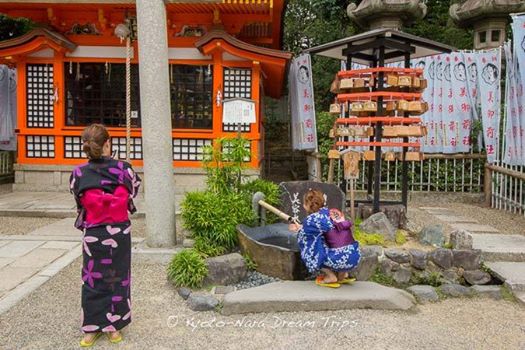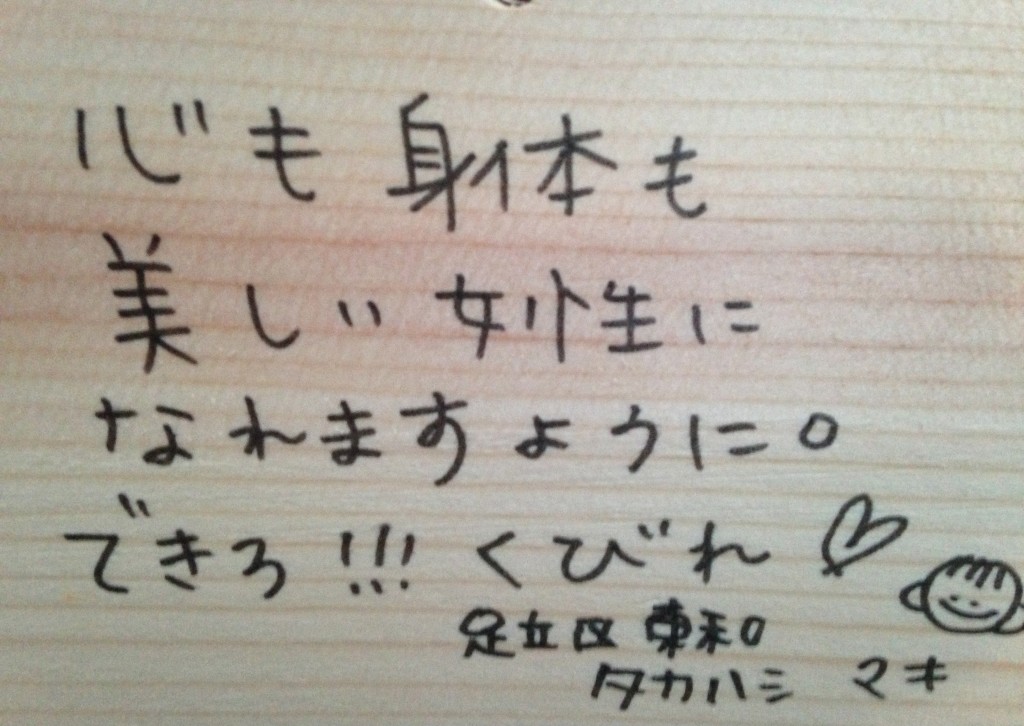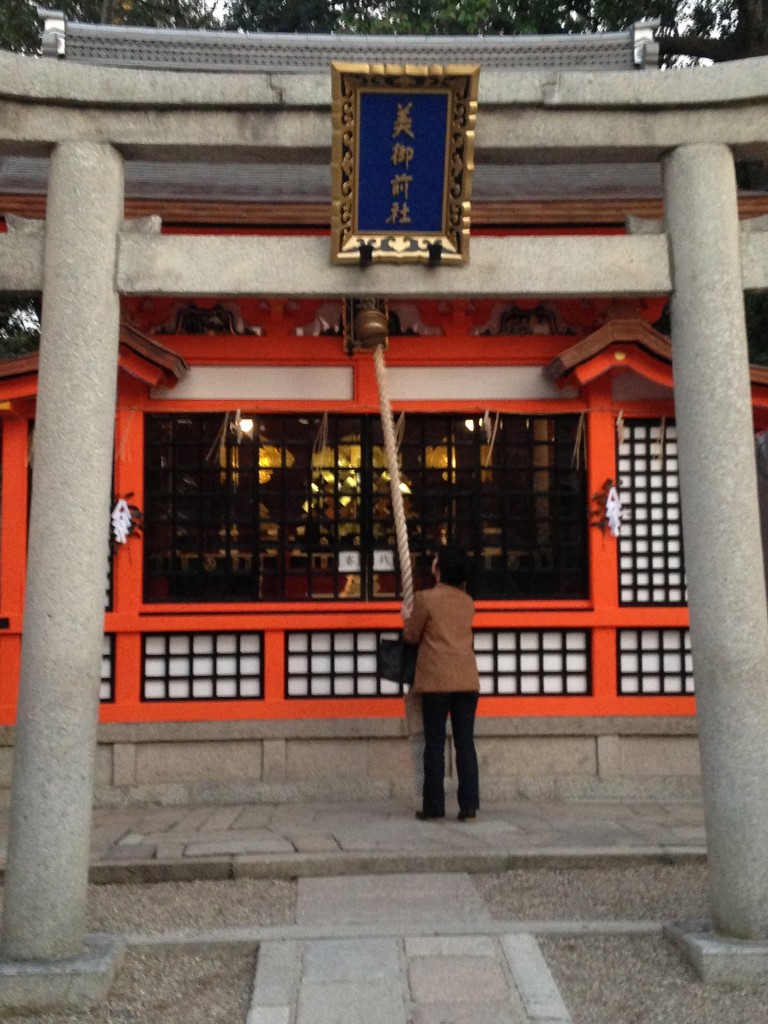
Women taking beauty water at the Utsukushi-gozen Shrine (all photos courtesy Hugo Kempeneer)
The following piece comes from our friend, Hugo Kempeneer, the man behind the seductive photos of Kyoto-Nara Dream Trips which have been winning increasing attention recently. See his blog at http://www.kyotodreamtrips.com/
*********************************************
On the grounds of the Yasaka shrine in Kyoto are many sub-shrines, some more colourful than others. This is the Utsukushi-gozen Shrine and you can find it on the east side of the Hondo, or main hall. During the Gion Matsuri, this shrine and all other buildings are colourfully decorated for a whole month. There is much activity in the shrine grounds as people come from all over to partake in the Gion matsuri festivities.
The Utsukushi-gozen Shrine is dedicated to three beautiful goddesses of Japanese history. They are Ichikishima-hime-no-kami, Tagiri-hime-no-kami and Tagitsu-hime-no-kami [known as the 3 female Munakata kami]. If you visit the Utsukushi-gozen Shrine you’ll notice that many, young and old, woman come to pray here and use the water from this spring. Legend has it that, “If you wash your hands and face with the “Biyōsui”, your skin and heart will be beautified. Enjoy the beauty water and this mystical shrine.
Yasaka Shrine History:
Susanoo-no-Mikoto, Kushinadahime-Mikoto and Yahashirano-mikogami are enshrined here. The shrine is sometimes referred to as “Gion San” or “Yasaka san” by the local people. According to tradition, Yasaka Shrines dates back to 656, when Susanoono-mikoto was enshrined here. Thus the shrine’s foundation was long before Kyoto became the capital.
The Gion Matsuri is held every July and its origin dates back to the Goryo-e festival held for the first time in 869. That year many plagues prevailed in Japan and the people of Kyoto prayed for the appeasement of the evil spirits by constructing 66 halberds. This number equalled the number of provinces that existed at that time in Japan. From the Yasaka shrine those floats and mikoshi (portable shrines) went to Shinsen-En (South of Nijo Castle). Ever since the year 970, the Gion Matsuri has been held annually.

Ema at the Utsukushi-gozen Shrine, a sub-shrine of Yasaka shrine in Kyoto.
Explanation of Kami enshrined here:
From the “Encyclopaedia of Shinto”: “The Yasaka shrine is dedicated to Susanoo as its chief kami, with his consort Kushinadahime on the East, and eight offspring deities (Yahashira no mikogami) on the west.
The honourable offspring include: Yashimajinumi no kami, Itakeru no kami, Ōyatsuhime no kami, Tsumatsuhime no kami, Ōtoshi no kami, Ukanomitama no kami, Ōyatsuhiko no kami, and Suseribime no mikoto.” See All Pics Here!

The “Beauty water” at the Utsukushi-gozen Shrine

A prayer to be more beautiful in body and mind (photo John Dougill)

A woman rings the bell at the subshrine before paying respects to the goddesses of beauty (photo John Dougill


Leave a Reply